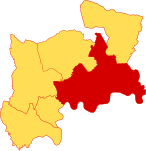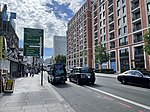2011 London anti-cuts protest

The 2011 anti-cuts protest in London, also known as the March for the Alternative, was a demonstration held in central London on 26 March 2011. Organised by the Trades Union Congress (TUC), it was a protest march against planned public spending cuts by the Conservative-Liberal Democrat coalition government that was formed in May 2010. Various sources estimated that the demonstration was attended by between 250,000 and 500,000 people. It was described as the largest protest in the United Kingdom since the 15 February 2003 anti-war protests and the largest union-organised rally in London since the Second World War.Demonstrators marched from the Thames Embankment, via the Houses of Parliament, to Hyde Park where a rally took place with speakers including the TUC general secretary Brendan Barber and leader of the opposition Ed Miliband, who addressed the assembled crowds.Several independent protesting groups, some of whom had moved from the main march, assembled further north in the heart of London's West End, where shops and banks were vandalised and some individuals clashed with police. Further clashes were reported later in Trafalgar Square. 201 people were arrested, and 66 were injured, including 31 police officers.
Excerpt from the Wikipedia article 2011 London anti-cuts protest (License: CC BY-SA 3.0, Authors, Images).2011 London anti-cuts protest
South Carriage Drive, London Belgravia
Geographical coordinates (GPS) Address Nearby Places Show on map
Geographical coordinates (GPS)
| Latitude | Longitude |
|---|---|
| N 51.5109 ° | E -0.162 ° |
Address
Hyde Park
South Carriage Drive
W1J 7NT London, Belgravia
England, United Kingdom
Open on Google Maps










